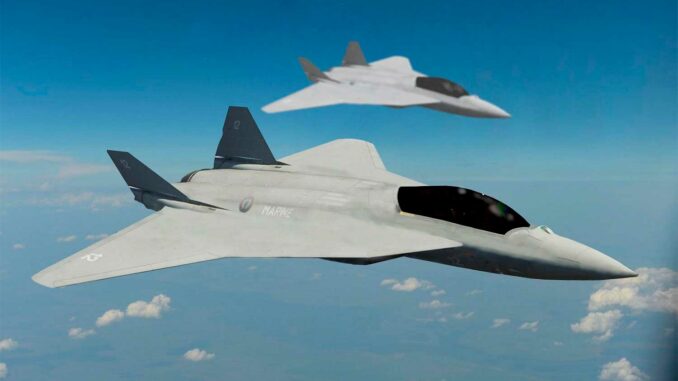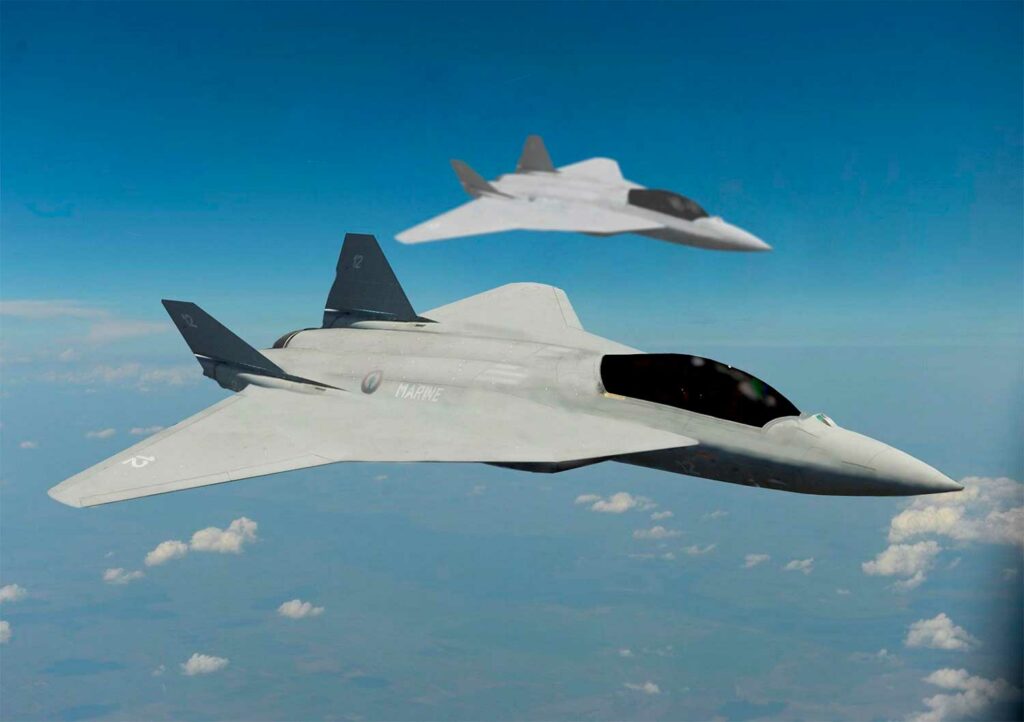
The SCAF program has been weakened by tensions between Dassault and Airbus, which came to light at the Paris Air Show in July 2025.
A strategic project under pressure
The Future Combat Air System (SCAF), a European program intended to produce a sixth-generation fighter jet by 2040, is facing a new crisis. On July 23, 2025, on the sidelines of the Paris Air Show, industrial and government sources confirmed that deep differences between Dassault Aviation and Airbus Defence and Space were directly threatening the viability of the project. The disagreement mainly concerns the division of tasks in the development phase of the demonstrator, scheduled for 2028, and the industrial responsibilities related to critical flight control systems.
Supported since 2017 by France, Germany, and Spain, the SCAF is intended to eventually replace the Rafale and Eurofighter Typhoon and embody European strategic autonomy in the field of aviation. But behind the stated goal of uniting the continent’s technological forces, the program remains hampered by industrial rivalries, competing political objectives, and a lack of clear arbitration by the partner states.
The public dispute between two pillars of the European aerospace industry shows that political announcements are not enough to guarantee the solidity of such a complex program. Without a rapid agreement, the SCAF could fall behind or even lose its appeal to competing projects such as the GCAP led by the United Kingdom, Italy, and Japan.
A structural disagreement between two opposing industrial visions
The heart of the dispute lies in the industrial management of the combat aircraft demonstrator, scheduled to fly in 2029. Dassault Aviation, the designer of the Rafale, wants to retain exclusive control of the airframe, including flight controls, radar discretion, and the human-machine interface. For the French company, this requirement is non-negotiable, given its recognized expertise in the design of modern fighter jets and its technical independence.
Airbus, as co-leader of the project, disputes this monopoly. The German company is demanding a fair distribution of tasks, particularly with regard to the aircraft’s technological components, including critical software and onboard systems. Airbus argues that German industrial expertise is up to the challenge and that an unbalanced distribution would set an unacceptable precedent for future phases of the program.
These tensions are not new. In 2021 and then in 2022, similar deadlocks led to several months of frozen negotiations, until a memorandum of understanding was signed at the last minute. The same scenario seems to be repeating itself. The situation is all the more complex given that Spain, the SCAF’s third partner, is not neutral: its industry, represented in particular by Indra, intends to play a more active role in sensor systems and data fusion, at the risk of further complicating industrial trade-offs.
The SCAF’s tripartite model, with no clear leader and competing industrial ambitions, is showing its limitations. In the absence of a direct chain of command, each partner is falling back on its national priorities, even if it means collectively blocking the program’s progress.

A program weakened by budget constraints and alternatives
The total estimated cost of the SCAF for its three partners is around $100 billion, spread over more than two decades. The budget for the first phase of development is $3.8 billion, shared between the three countries. This funding covers the design of the demonstrator, as well as initial studies on escort drones, interconnected sensors, and tactical connectivity.
In the context of budget cuts imposed by the war in Ukraine, some German parliamentarians have expressed doubts about the financial sustainability of the program, given that Berlin is already investing heavily in the purchase of American F-35s and the modernization of its Eurofighter fleet. In France, although the SCAF is officially included in the 2024–2030 Military Programming Law, several senators have warned of the lack of concrete guarantees regarding the technical validation stages.
At the same time, the competing GCAP (Global Combat Air Program) project is progressing more quickly. The British demonstrator, led by BAE Systems, Leonardo, and Mitsubishi, is expected in 2027. The existence of a clearer roadmap, centralized task distribution, and strategic consensus among the partners makes this program more transparent and potentially more attractive to interested third countries.
In this context, the SCAF risks not only falling behind, but also losing its ability to structure an autonomous European defense industry. For both Dassault and Airbus, a prolonged impasse would risk the program breaking up or simply renewing existing fleets until they reach the end of their operational life.
A political decision is essential to save the project
The only way out of the crisis identified to date is through direct intervention by heads of state, as was the case in 2022. At this stage, neither the Élysée nor the German chancellery have expressed a firm public position. Political ambiguity is fueling industrial paralysis: without clear guidelines on the governance of the project, manufacturers are continuing to make contradictory demands.
France insists that Dassault remain the main architect of the fighter jet, in the name of technological continuity with the Rafale. Germany wants to guarantee equal access to strategic defense technologies so as not to be dependent on the capabilities of a single partner. Spain, for its part, is seeking to avoid marginalization of its manufacturers, particularly in the areas of combat cloud and electronic warfare.
These differences can only be resolved at the highest level. Repeated delays, persistent tensions, and a lack of transparency on the next steps threaten the program’s credibility. If decisions are not made in the coming months, the SCAF could be reduced to a collection of models and concepts with no concrete industrial outlet.
The armed forces, for their part, are beginning to express their impatience. Without a solid timetable or prototype, the prospects for replacing the Rafale and Eurofighter are becoming uncertain. This poses a major operational problem, as the first generations of these aircraft will reach their structural limits from 2035 onwards. However, the design, testing and production lead times for a fighter jet easily exceed 15 years.
War Wings Daily is an independant magazine.